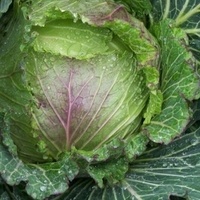
Sowing seeds in November varies depending on whether you are in the Northern or Southern Hemisphere. In the Northern Hemisphere, November marks the transition to winter, while in the Southern Hemisphere, it is a late spring month. Here are some vegetable and herb seeds you can consider sowing in November:
Northern Hemisphere: Late Fall/Winter Planting
- Winter Radishes (Raphanus sativus): While regular radishes thrive in cooler weather, winter radishes are specifically bred for colder temperatures. Sow these in November for a late winter harvest.
- Winter Lettuce (Lactuca sativa): Certain lettuce varieties, such as Winter Density or Arctic King, are well-suited for late fall and winter planting. They can tolerate colder temperatures and provide fresh greens during the colder months.
- Brussels Sprouts (Brassica oleracea var. gemmifera): Brussels sprouts are cold-hardy and taste sweeter after exposure to frost. Sow seeds indoors in November for transplants that can be set out in the garden.
- Winter Spinach (Spinacia oleracea): Similar to lettuce, some spinach varieties are more cold-resistant. Plant winter spinach in November for a late fall or early winter harvest.
- Garlic (Allium sativum): November is an excellent time for planting garlic cloves directly into the soil. They will establish roots over winter and produce bulbs by the following summer.
- Shallots (Allium cepa var. aggregatum): Like garlic, shallots can be planted in November for a summer harvest. Separate individual bulbs and plant them in well-drained soil.
- Chard (Beta vulgaris subsp. vulgaris): Chard is a hardy green that can withstand colder temperatures. Sow seeds in November for a late fall or early winter harvest.
- Winter Cabbage (Brassica oleracea var. capitata): Winter cabbage varieties are adapted to colder conditions. Start seeds indoors in November for transplants that can be set out in the garden.
- Onions (Allium cepa): In regions with mild winters, onions can be planted in November for a spring harvest. Choose short-day onion varieties for better results.
- Kale (Brassica oleracea acephala): Kale is a cold-tolerant leafy green that can be sown in November for a winter harvest. It becomes sweeter after exposure to frost.
Southern Hemisphere: Late Spring Planting
- Tomatoes (Solanum lycopersicum): In the Southern Hemisphere, November is a great time to start tomato seeds indoors for later transplantation outdoors in early summer.
- Peppers (Capsicum annuum): Begin pepper seeds indoors in November for transplanting outdoors once the risk of frost has passed. Choose varieties suited for your local climate.
- Zucchini (Cucurbita pepo): Zucchini is a warm-season vegetable that can be started from seeds indoors in November and transplanted outdoors once the weather warms up.
- Cucumbers (Cucumis sativus): Similar to zucchini, cucumber seeds can be started indoors in November and transplanted outdoors in spring.
- Basil (Ocimum basilicum): Basil is a warm-season herb that can be started from seeds indoors in November. Transplant the seedlings outdoors in spring once the weather is consistently warm.
- Beans (Phaseolus vulgaris): Bush beans and pole beans (runner beans) can be directly sown in the garden in November. They prefer well-drained soil and full sunlight.
- Corn (Zea mays): Corn is a warm-season crop that can be sown directly in the garden in November. Ensure the soil is well-drained and has sufficient nutrients.
- Dill (Anethum graveolens): Dill is a herb that prefers warmer temperatures. Sow dill seeds directly in the garden or in containers in November for a spring and summer harvest.
- Cantaloupe (Cucumis melo): Cantaloupes, also known as muskmelons, can be started from seeds indoors in November in the Southern Hemisphere. Transplant them outdoors once the weather is warm and frost-free.
- Lavender (Lavandula spp.): Lavender is a perennial herb that can be grown from seeds or cuttings. Start lavender seeds indoors in November and transplant outdoors when the weather is consistently warm.
Remember to adjust your planting schedule based on your specific climate and local frost dates. Provide proper care, including watering, fertilization, and pest control, to ensure the success of your garden. Happy gardening!
Visited 38 times, 1 visit(s) today
Leave a Reply